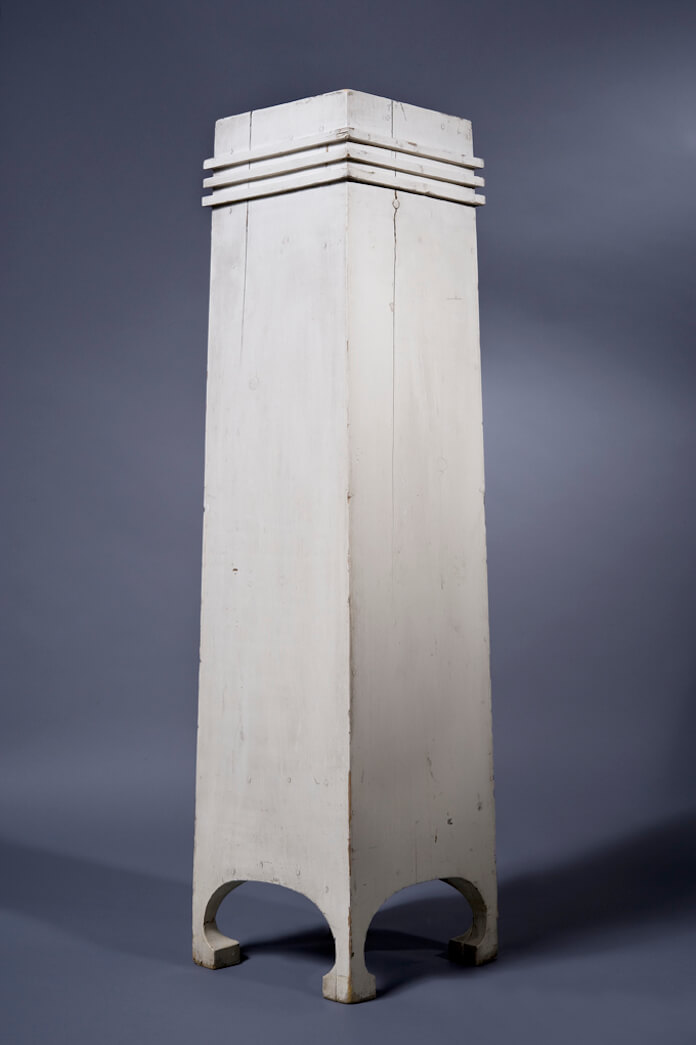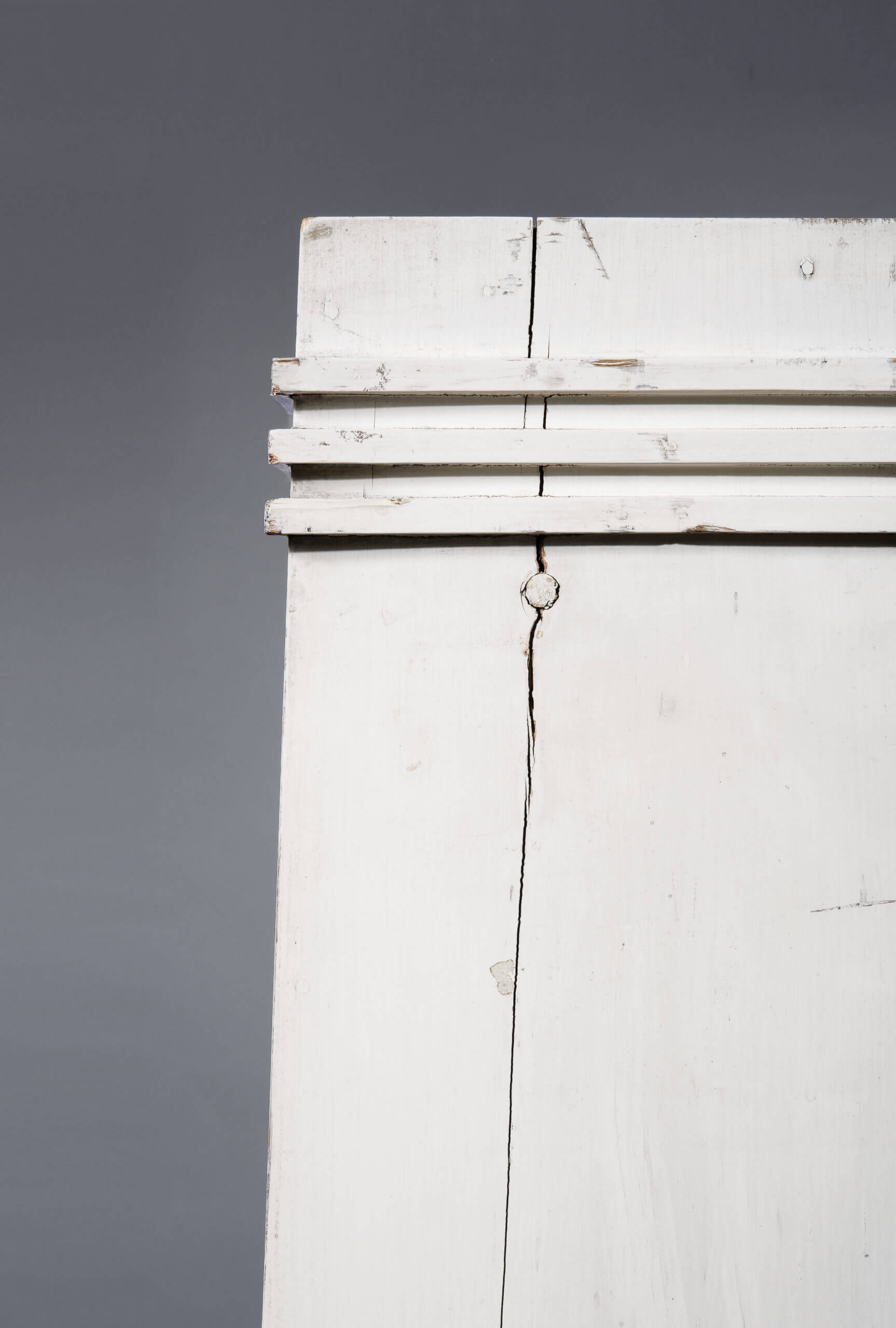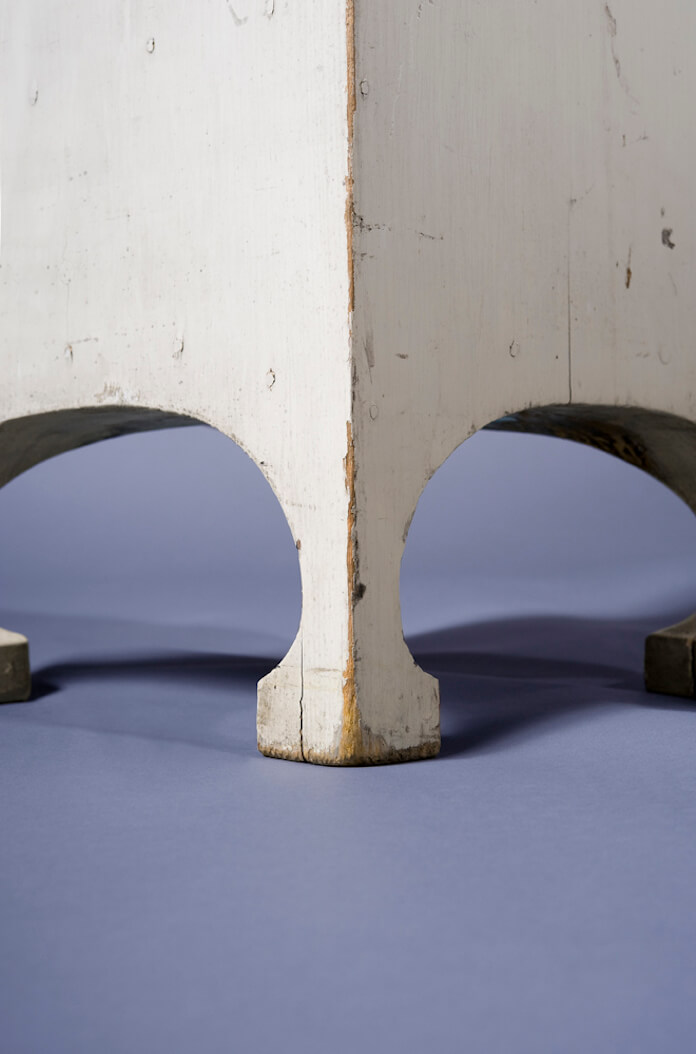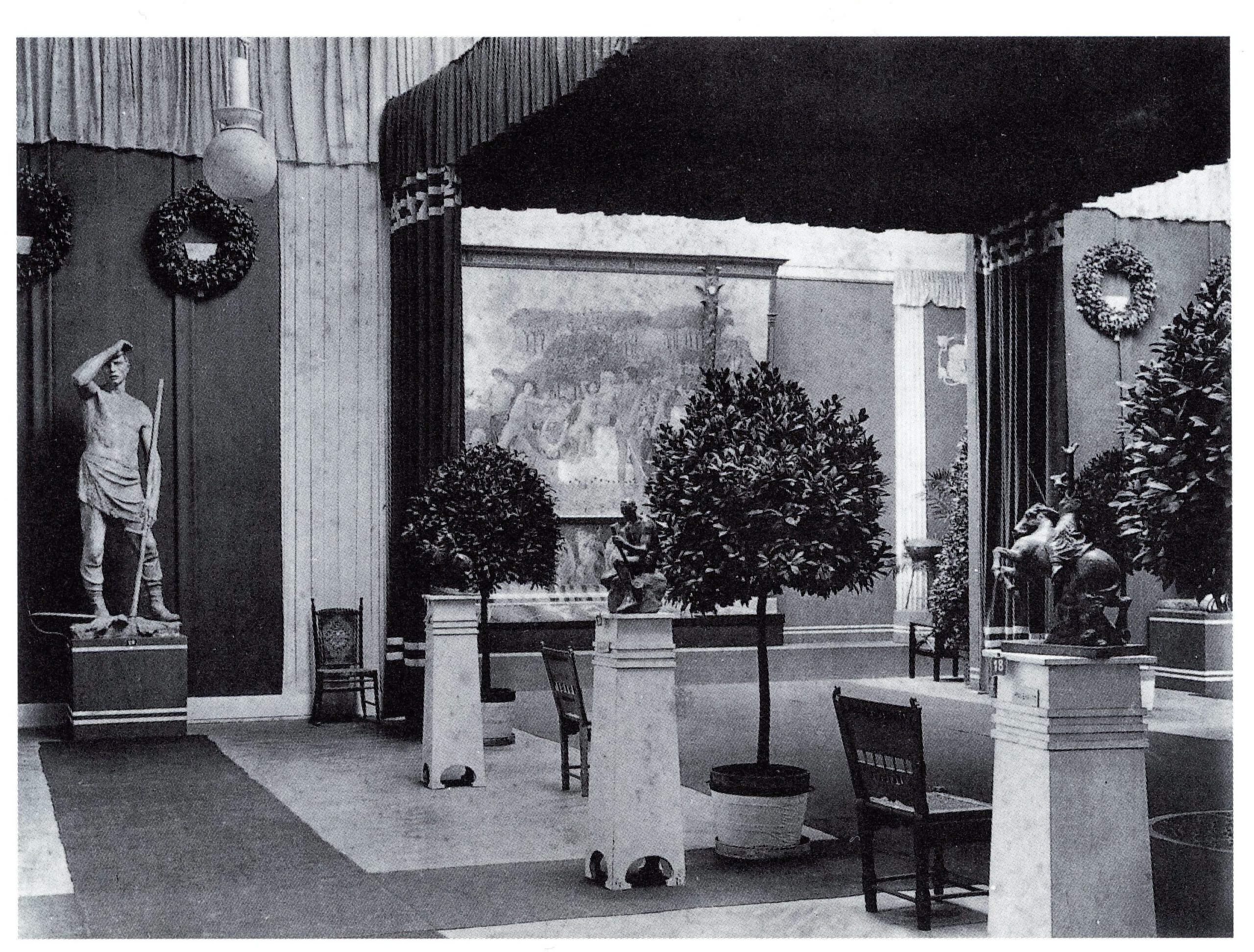
Made for
The first five exhibitions of the Viennese Secession
Year
1898
Material
White painted soft wood
Dimensions
H. 117,5 x Platform 25 x 25 cm
Ver Sacrum, Vol I, 1898, Nos. 5/6, P. 7
Ver Sacrum, Vol II, 1899, No. 8, P. 25
The Studio, Vol. 22, 1900, P. 261-266
Forsthuber, S., Moderne Raumkunst. Wiener Ausstellungsbauten Von 1898 Bis 1914; Vienna 1991, P. 28, 36, 40
Vienne 1900 Klimt, Schiele, Moser, Kokoschka, 2005 P. 59

We could scarcely find an object more predestined than this piece of furniture as well as exhibition furnishing to document the enormous ideological and therefore artistic revolution that started in Vienna in 1895 and which found its official mouthpiece in the Secession, established in 1897. It is representative of the agenda to create a total design concept upheld by the young generation of artists surrounding Gustav Klimt, Josef Hoffmann and Koloman Moser. They set themselves the task of using the arts to create a world that was more compliant to addressing twentieth-century human needs. They based their aspirations on the British Arts & Crafts movement’s demand for unity in the arts, which saw no difference between the fine and the applied arts. No task was so minor or trivial that it could not be artistically reinterpreted. This would ensure that artistic expression penetrated the whole of everyday life an ideal that gave rise to the idea of everyday life as a total work of art.
Correspondingly, the Secession presented itself to the outside world with an image that was quite deliberately individual in design and embraced all visual aspects of its public profile. Starting with the exhibition building, this included exhibition design, exhibition catalogues, posters, stationery and the graphic design of its monthly magazine “Ver Sacrum” and its advertisements. It thus developed a completely new, total artistic concept, which enabled its activities to culminate into a total work of art the Gesamtkunstwerk. The quality of the exhibits also corresponded throughout to their ephemeral manner of presentation. The Secession artists above all Hoffmann and Moser thus developed for the first time with their exhibition design a communication medium that has lost none of its powers of conviction even today.

The model of the pedestal variant presented here testifies to the birth of this artistic reorientation. Josef Hoffmann designed it in 1898 for the so-called Ver Sacrum Room in the 1st Secession Exhibition. He used it again in the same year in the Ver Sacrum editor’s office situated in the basement of the newly opened Secession building. Stained dark in the first two cases, it was seen again in various versions and painted white as exhibition furnishing in the rooms of the 3rd (1899), 4th (1899), and 5th (1899/1900) Secession exhibitions. Because of Hoffmann‘s aesthetic and technical development from around 1900/01 on in part under the influence of Charles R. Mackintosh he found no further use for the pedestal later on.
The model variant of the above-mentioned pedestal shows the earliest preserved piece of furniture ever designed by Hoffmann. It stands at the start of his career as furniture designer. This phase lasted only two years and is marked by the search for an individual form of artistic expression executed in the most simple and basic constructional techniques of cabinetmaking. The unveneered softwood board is endowed a style-forming function as a determining element of design. This so-called “Brettelstil” (“board style”) is based via the English Arts & Crafts movement on the design theory of Augustus Welby N. Pugin. Harking back to the medieval ideal of the clarifying unity of ornament and construction, the board is retained as constructive raw material; any ornament is sawn out solely from the board or added as flat element. Carved elements or veneer techniques are not an option, alone for reasons of cost. The basic ideological consideration behind this materially unspectacular aesthetic solution is the conviction that the human being projects an image of him- and herself by means of inner, non-material values, and not by means of an object. This pedestal, which diverges only in minor details from the pedestal documented at the Secession, is assembled by Hoffmann out of four upwardly tapering softwood boards.

There are no complicated joints, but the single boards are butt-jointed together with nails. Like a medieval chest, the pedestal does not have attached feet. Hoffmann creates them by cutting out a squashed arch from the bottom part of the boards. The only compromise as regards this “primitive” type of construction is reflected in the wooden wedges bonded onto the inner bottom corners of the pedestal, which continue the curved contours of the sawn-out arch. This means that the board can no longer appear as such at this point and is transformed from a flat into a spatial element. Through it Hoffmann suggests a horizontal base, which is in subtle communication with the top end of the pedestal; here, three narrow, horizontal frets run around the four sides, placed below the top end of the pedestal at approximately the same distance as the width of the three frets together. This conjures up an evocation of a ruff collar, which doesn’t diminish the vertical thrust of the pedestal, but allows the psychological impression of a horizontal finish. In this way the effect is produced of a gradual transition from what is in principle a vertically oriented piece of furniture to a horizontal one. In this early piece of furniture, executed with the simplest of means, Hoffmann already demonstrates his later mastery in the subtle exploitation of opposites in order to attain an individual and autonomous solution, one that makes the observer not just the consumer of an object but into an active, viewing participant in its wizardry.
CWD
Exhibitions of the Viennese Secession



